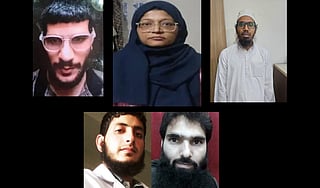Just outside Delhi, in Faridabad’s Dhauj village, Haryana police and central agencies unearthed one of India’s largest peacetime explosive seizures—nearly ~2,900 kg of ammonium-nitrate based material, along with rifles, pistols, ammunition, detonators, and timers.
The flat belonged to Dr. Muzammil Shakil, an MBBS graduate from Jammu & Kashmir (Pulwama region), reportedly around 35 years old, who had been teaching at Al-Falah University. He had rented the property months earlier under a false pretext.
Locals described him as “educated and polite.” But investigators allege he was storing ammonium nitrate mixed with metal powders, ingredients identical to those used in improvised explosive devices. Muzammil’s arrest followed interrogation of another doctor from Kashmir, leading to the Faridabad raids.
Forensic experts are still determining the final mixture’s potency. Yet even preliminary findings show planning, discipline, and resources, traits that disturbingly align with his professional training.


